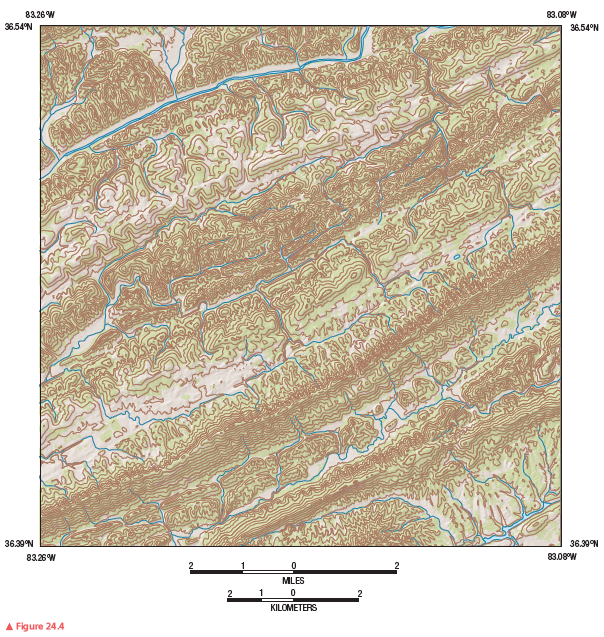Why do most sediments end up being deposited in oceans instead of other parts of the Earth?
What will be an ideal response?
There are a few explanations. First, 2/3 of the Earth's surface is oceans so it is most likely that anything on the Earth's surface will be in an ocean. In addition, most streams end in the oceans and the streams are one of the important mechanisms for moving sediment. I would also add that gravity moves things downhill and the ocean basins are generally lower than the continental surfaces.
You might also like to view...
How many electrons are transferred from iron atoms to oxygen atoms in the formation of two molecules of iron hydroxide, Fe(OH)2?
A. 4 electrons B. 16 electrons C. 8 electrons D. 12 electrons
What type of geographic feature is the water body called Fish Lake, and how did it form? Use the illustration in Figure 24.3 to identify this water feature.
Figure 24.8 is a portion of the Philipp, Mississippi, 7.5-minute quadrangle in northwestern Mississippi. The Tallahatchie River flows through the landscape from west to east. (Remember to use the topographic map symbol legend inside the front cover of this manual.)
Review Figure 24.4, analyze Figure 24.8 closely, and answer the following questions and completion items about Figure 24.8.


Which distribution is the rarest found in communities?
A) Random distribution B) Uniform distribution C) Clumped distribution D) None of these choices
The remote locales and nonexistent or small human population of some Pacific islands have made them irresistible sites for weapons ____ by the great powers controlling them
Fill in the blank(s) with correct word